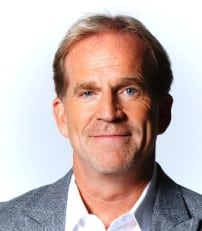For years, it wasn’t unusual for employees at performance coaching company Exos to work in the office six days a week to ensure their clients’ needs were being met, Chief People Officer Greg Hill recalls. Indeed, it was common practice at organizations around the globe, despite contributing to employee burnout.
The practice ended abruptly in March 2020 when the pandemic began. But burnout didn’t. The condition, described by researchers as when people are highly engaged over a long period without the personal skills and organizational support to maintain their wellbeing, escalated worldwide. At Exos, employees struggled with caregiving, health concerns and having everyone at home all the time, Hill says.
Today, although the pandemic has subsided, companies continue to see burnout as employees struggle with work/life balance as they return to the office. Earlier this year, 70% of Exos employees said they sometimes feel burnt out.
See also: Can a 4-day workweek provide health benefits to employees?
Numbers like that prompted Hill and his team to develop a strategic response: a four-day workweek called You Do You Fridays and an accompanying framework for balancing work and rest called the Readiness Culture Code. The programs began last May as a six-month pilot involving about a third of Exos’ employees. They were so successful at boosting productivity while reducing burnout that by November, the programs had been instituted for the entire workforce of 3,000 people.

“For us, it wasn’t just about a shorter, four-day workweek,” Hill says. “Our goal was to help our teammates find a balance between work and rest so that each individual had the capacity to reach their full potential and prove that work plus rest equals success.”
He says it’s working, citing data from employee surveys, wearables, manager appraisals and Google Suite’s productivity and collaboration apps. Before the pilot program, for example, 70% of employees reported occasional burnout. Afterward, that number fell to 36% among employees in the pilot, according to Exos’ recently released report detailing its experiment.
Employee turnover also decreased, falling from 47% in 2022 to 29% in 2023, while employees’ self-reported productivity shot up. Before the pilot program, about two-thirds of employees reported they spent their time working efficiently, according to the report. Six months later, that figure rose to more than 90%.
Meanwhile, in the last two quarters of 2023, the company’s sales pipeline grew 211% year-over-year, despite the shorter workweek for some during that time.
“The most surprising fact is that Exos’ workforce has not lost productivity, but instead just started working in a different, more effective and efficient way with more flexible, output-driven work schedules,” Hill says.
4 people strategies for reducing burnout
Hill says these aspects of its new people strategy helped Exos reduce burnout while maintaining business performance:
4-day workweek, aka ‘You Do You Fridays’
Employees now work a condensed week—40 hours over four days—and can choose their own activity on Fridays: leisure, catching up on individual work or recovering from work. The majority take the day off. As for being in the company’s Phoenix headquarters or offices across the country, employees can choose where they spend their four days of work. Some are fully remote, some are hybrid with one to three days in the office depending on their work group and others are in the office full-time, Hill says.
Microbreaks
Standard internal meetings, which previously were 30 or 60 minutes, have been reduced to 25 minutes or 50 minutes. This builds in 5- and 10-minute microbreaks throughout the day, even if employees have back-to-back meetings.
Better meetings
Managers and team leaders organizing these now-shorter meetings must also provide an agenda and goals for each meeting. They are also required to consider the time zones of dispersed attendees. That might mean embracing asynchronous teams and work schedules or simply being mindful when scheduling meetings across time zones. Exos asks employees to include their time zone and working hours in their email signatures, Hill says.
Intentional scheduling
Tuesdays and Thursdays are dedicated meeting days, and Mondays and Wednesdays are focus days for individual work. This scheduling aims to avoid task switching and improve productivity and efficiency.
Mindset shift required
Thanks to an existing friendship between Exos CEO Sarah Robb O’Hagan and well-known workplace author and organizational psychologist Adam Grant of Penn’s Wharton School of Business, the company’s pre- and post-pilot data was analyzed by two experts: Grant and his colleague Marissa Shandell, a doctoral candidate.

One of Grant’s top takeaways could have wide implications for organizations globally.
“A key lesson is broader than the results themselves—it’s about the mindset that led to the results,” Grant writes in the Exos report.
“Many leaders are reluctant to test new models of working; they’re afraid of giving up on the tried-and-true and setting precedents that might be difficult to uphold. Yet, failing to explore different possibilities makes it impossible to innovate and change.”
Learn more about ways to safeguard employees’ mental health at the Elevate People, Ignite Change (EPIC) conference on April 24-26 at the Bellagio in Las Vegas. Attend the session on Preparing Managers for the Conversation on Mental Health.

